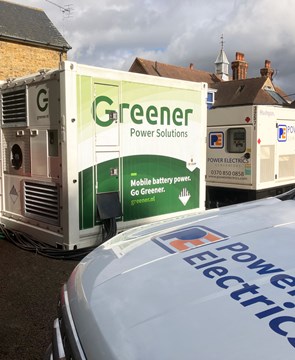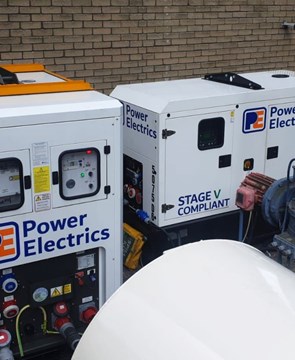The Difference Between kVA and kWh
The consumer technology we have in our homes often has chargers measured in watts and batteries measured in milliampere-hours (mAh). In the industrial temporary power market, generators are measured in kilovolt-amperes (KVA) and Battery Energy Storage (BES) units are measured in kilowatt-hours (kWh).
In this blog, we will explore the differences between kVA and kWh and how this is utilised in the temporary power industry.
Definitions (kW, kVA, kWh)
To begin with we need to refresh our minds on the definitions of kW, kWh, and kVA:
kW (kilowatt)
A kilowatt (kW), also known as Working Power, Actual Power, or Active Power, refers to the energy that is converted into a useful output, capable of powering equipment.
kWh (kilowatt hours)
A kilowatt-hour (kWh) measures energy usage and represents the energy consumed by an appliance running for an hour. This means one kilowatt-hour is the amount of energy you’d use if you kept a 1,000-watt appliance running for an hour.
But different appliances use different amounts of energy, for example, an alarm clock uses less power than an electric kettle.
Here are a few examples:
- A 50-watt hi-fi would take 20 hours to use 1 kWh.
- A 100-watt light bulb would take 10 hours to use 1 kWh.
- A 2,000-watt dishwasher would use 1 kWh in half an hour.
This means that with one of our 90kWh BES units, you could power all three non-stop for almost two days.
However, it is worth stating that depending on the load, the discharge rate will affect the amount of usable stored energy. It is better to consider a value of 75% as usable energy to cycle through rather than fully discharge the battery every time.
kVA (kilo volt ampers)
Kilo-Volt-Amperes, known as Apparent Power, provides a sum of the total power utilized within a system. It represents the combined value of both kVAR (Reactive Power) and kW (Real Power). For a deeper understanding of the distinction between kW and kVA explore the insights shared in "The Difference Between kW and kVA" Blog.
The Difference
The main difference between kVA and kWh is what they measure. kVA measures the apparent power of an electrical system and is an instantaneous level, while kWh measures the amount of energy consumed over time – or the size of a BES unit.
To convert kVA to kWh, you need to know the power factor (pf) of the system, for generators, we use 0.8.
You can then use the following formula:
(kVA x pf = kW) x time in hours = kWh
So if you have a 100 kVA generator running for 5 hours:
(100 kVA x 0.8 pf = 80 kW) x 5 hrs = 400 kWh
It is worth noting that this theoretical math doesn’t allow for losses in the system such as distribution systems and cables etc.
If you have any questions or would like to speak to a member of our team about your next project, please contact us using the link below.




